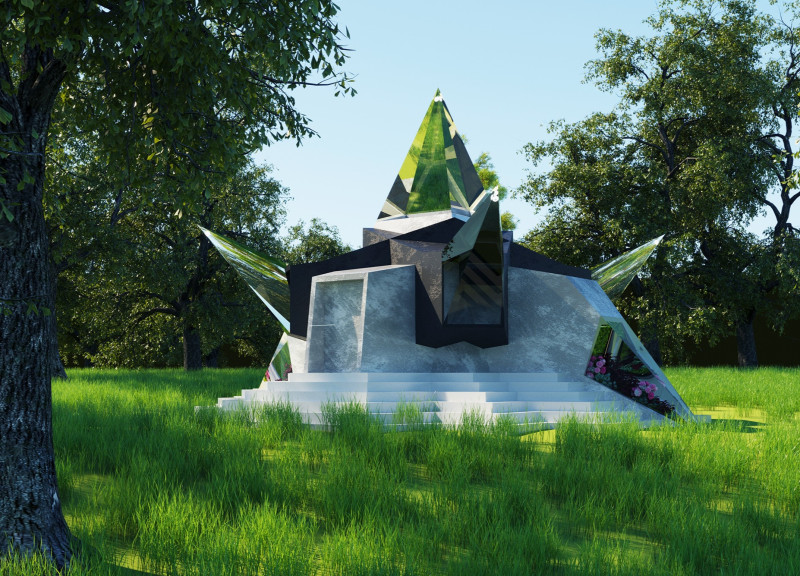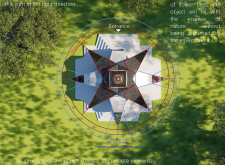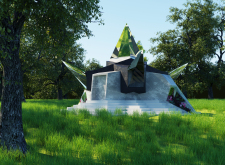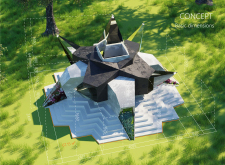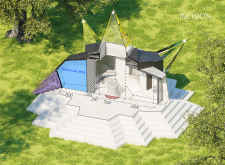5 key facts about this project
The Tiny Kiwi Meditation Cabin is a thoughtfully designed space that offers a refuge for those seeking peace and reflection. Located in a tranquil natural setting, the cabin serves as a dedicated area for meditation. The design emphasizes light and spatial arrangement to create a calming environment, guided by the symbolism of the anahata lotus flower, which represents love for all life.
Light and Spatial Organization
One of the main features of the cabin is the strategic placement of prisms of light behind the seating areas. These prisms are designed to direct light towards those meditating, helping individuals connect with their inner selves. The focus on light plays a vital role in enhancing the meditative atmosphere, making it easier for users to experience moments of clarity. The layout incorporates designated areas for meditation, entry, technical functionality, and ventilation, ensuring that each space serves its intended purpose.
Material and Structural Considerations
The cabin is built with concrete elements that offer durability and strength. This choice of material creates a solid foundation for the building. Concrete is complemented by the prisms of light, which add a sense of dynamism to the interior. The combination of these materials encourages a deeper sensory experience, allowing users to engage more fully in their meditation practice.
Integration with Nature
The design carefully considers its relationship with the surrounding environment, featuring flower beds that promote ventilation and enhance the connection between the cabin and the landscape. This thoughtful integration encourages visitors to appreciate the natural world while using the space. The cabin serves as a tranquil spot where people can find solitude and contemplation away from the distractions of everyday life.
In this meditative environment, the directed light plays a crucial role in shaping the atmosphere, creating a serene space where individuals can focus and unwind.


